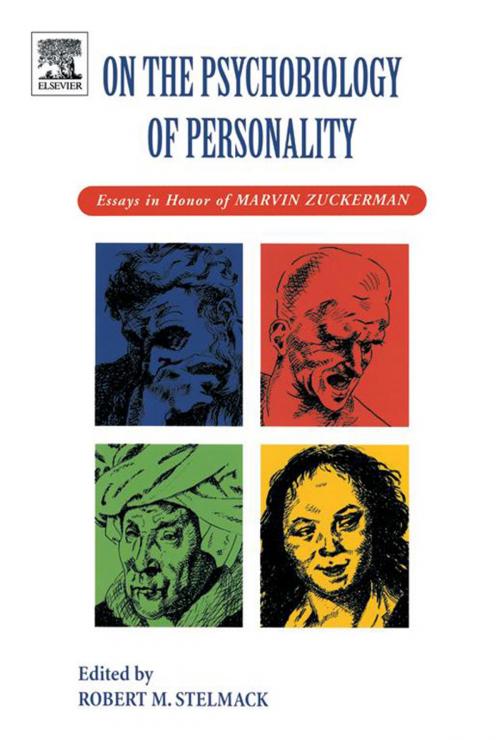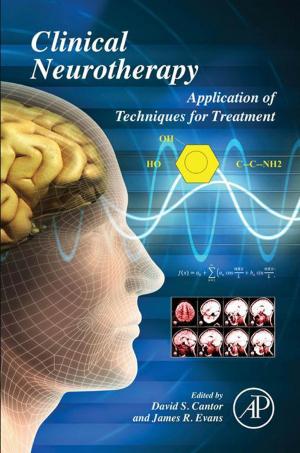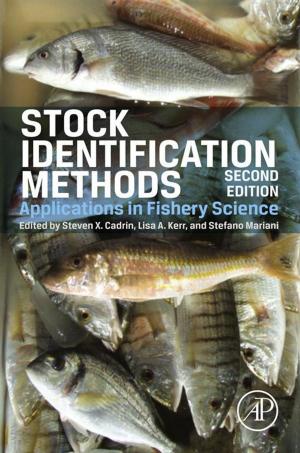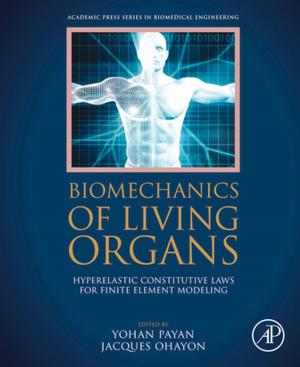On the Psychobiology of Personality
Essays in Honor of Marvin Zuckerman
Nonfiction, Health & Well Being, Psychology, Physiological Psychology, Neuropsychology| Author: | ISBN: | 9780080537986 | |
| Publisher: | Elsevier Science | Publication: | November 12, 2004 |
| Imprint: | Pergamon | Language: | English |
| Author: | |
| ISBN: | 9780080537986 |
| Publisher: | Elsevier Science |
| Publication: | November 12, 2004 |
| Imprint: | Pergamon |
| Language: | English |
Zuckerman received his Ph.D. in psychology from New York University, Graduate School of Arts and Science in 1954 with a specialization in clinical psychology. After graduation, he worked for three years as a clinical psychologist in state hospitals in Norwich, Connecticut and Indianapolis, Indiana. While in the latter position the Institute for Psychiatric Research was opened in the same medical center where he was working as a clinical psychologist. He obtained a position there with a joint appointment in the department of psychiatry. This was his first interdisciplinary experience with other researchers in psychiatry, biochemistry, psychopharmacology, and psychology.
His first research areas were personality assessment and the relation between parental attitudes and psychopathology. During this time, he developed the first real trait-state test for affects, starting with the Affect Adjective Check List for anxiety and then broadening it to a three-factor trait-state test including anxiety, depression, and hostility (Multiple Affect Adjective Check List). Later, positive affect scales were added.
Toward the end of his years at the institute, the first reports of the effects of sensory deprivation appeared and he began his own experiments in this field. These experiments, supported by grants from NIMH, occupied him for the next 10 years during his time at Brooklyn College, Adelphi University, and the research labs at Albert Einstein Medical Center in Philadelphia. This last job was his second interdisciplinary experience working in close collaboration with Harold Persky who added measures of hormonal changes to the sensory deprivation experiments. He collaborated with Persky in studies of hormonal changes during experimentally (hypnotically) induced emotions.
During his time at Einstein, he established relationships with other principal investigators in the area of sensory deprivation and they collaborated on the book Sensory Deprivation: 15 years of research edited by John Zubek (1969). His chapter on theoretical constructs contained the idea of using individual differences in optimal levels of stimulation and arousal as an explanation for some of the variations in response to sensory deprivation. The first sensation seeking scale (SSS) had been developed in the early 1960's based on these constructs.
At the time of his move to the University of Delaware in 1969, he turned his full attention to the SSS as the operational measure of the optimal level constructs. This was the time of the drug and sexual revolutions on and off campuses and research relating experience in these areas to the basic trait paid off and is continuing to this day in many laboratories. Two books have been written on this topic: Sensation Seeking: Beyond the Optimal Level of Arousal, 1979; Behavioral Expressions and Biosocial Bases of Sensation Seeking, 1994. Research on sensation seeking in America and countries around the world continues at an unabated level of journal articles, several hundred appearing since the 1994 book on the subject.
Zuckerman received his Ph.D. in psychology from New York University, Graduate School of Arts and Science in 1954 with a specialization in clinical psychology. After graduation, he worked for three years as a clinical psychologist in state hospitals in Norwich, Connecticut and Indianapolis, Indiana. While in the latter position the Institute for Psychiatric Research was opened in the same medical center where he was working as a clinical psychologist. He obtained a position there with a joint appointment in the department of psychiatry. This was his first interdisciplinary experience with other researchers in psychiatry, biochemistry, psychopharmacology, and psychology.
His first research areas were personality assessment and the relation between parental attitudes and psychopathology. During this time, he developed the first real trait-state test for affects, starting with the Affect Adjective Check List for anxiety and then broadening it to a three-factor trait-state test including anxiety, depression, and hostility (Multiple Affect Adjective Check List). Later, positive affect scales were added.
Toward the end of his years at the institute, the first reports of the effects of sensory deprivation appeared and he began his own experiments in this field. These experiments, supported by grants from NIMH, occupied him for the next 10 years during his time at Brooklyn College, Adelphi University, and the research labs at Albert Einstein Medical Center in Philadelphia. This last job was his second interdisciplinary experience working in close collaboration with Harold Persky who added measures of hormonal changes to the sensory deprivation experiments. He collaborated with Persky in studies of hormonal changes during experimentally (hypnotically) induced emotions.
During his time at Einstein, he established relationships with other principal investigators in the area of sensory deprivation and they collaborated on the book Sensory Deprivation: 15 years of research edited by John Zubek (1969). His chapter on theoretical constructs contained the idea of using individual differences in optimal levels of stimulation and arousal as an explanation for some of the variations in response to sensory deprivation. The first sensation seeking scale (SSS) had been developed in the early 1960's based on these constructs.
At the time of his move to the University of Delaware in 1969, he turned his full attention to the SSS as the operational measure of the optimal level constructs. This was the time of the drug and sexual revolutions on and off campuses and research relating experience in these areas to the basic trait paid off and is continuing to this day in many laboratories. Two books have been written on this topic: Sensation Seeking: Beyond the Optimal Level of Arousal, 1979; Behavioral Expressions and Biosocial Bases of Sensation Seeking, 1994. Research on sensation seeking in America and countries around the world continues at an unabated level of journal articles, several hundred appearing since the 1994 book on the subject.















